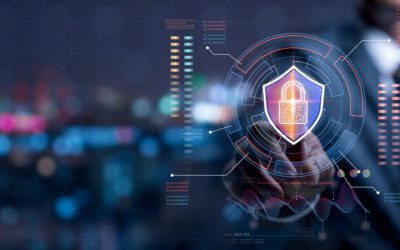What Is Phishing?
Phishing is a cyberattack method where hackers attempt to deceive individuals or organizations into providing sensitive information by posing as trustworthy entities. One of the most common forms of phishing is social engineering, where attackers trick people into downloading malware or disclosing confidential details such as:
- Credit card information
- Passwords
- Personally Identifiable Information (PII)
How to Protect Against Phishing Attacks?
Security Awareness Training and Best Practices. Organizations should prioritize educating employees on recognizing phishing attempts and establishing best practices for handling suspicious emails or messages. Here are key signs of phishing emails that users should be trained to identify:
- Requests for sensitive information, such as passwords or payment details
- Urgent demands to transfer money or update account information
- Unexpected file attachments or unsolicited requests
- A sense of urgency, whether direct (e.g., “Your account will be closed today…”) or subtle (e.g., an urgent request from a colleague to pay an invoice)
- Threats of jail time or other unrealistic consequences
- Poor spelling or grammar, or inconsistent sender addresses
- Shortened URLs (e.g., through Bit.ly or other link-shortening services)
- Images containing text instead of standard text in the message or linked pages
To reduce the risk, organizations can implement policies to alleviate the pressure on employees to identify phishing. For instance, policies can clarify that no manager or colleague will ever request money transfers via email. Employees should be encouraged to verify sensitive requests by contacting the sender directly or visiting the legitimate site, not using the links provided in the suspicious message. Never click on a link in a suspicious email. Phishing attempts and suspicious emails should always be reported to the IT or security team.
The Cost of a Phishing Attack
Phishing attacks can cause significant harm to both individuals and organizations. If successful, the consequences could include:
- Identity theft
- Operational disruption
- Data breaches
- Financial loss
- Reputation damage
Security Technologies that Fight Phishing
Despite the best user training and rigorous best practices, users still make mistakes. Fortunately, several established and emerging endpoint and network security technologies can help security teams combat phishing. Some examples of these technologies include:
- Email filtering solutions that can detect and block phishing emails before they reach users’ inboxes. This solution uses machine learning algorithms and heuristic analysis to help identify suspected phishing emails. Spam filtering automatically moves the email to a separate folder and disables any links they contain.
- Antivirus and anti-malware software that detects and neutralizes malicious files or code in phishing emails. Also, anti-phishing software is able to warn users before entering sensitive information on websites.
- Multi-factor authentication that requires at least one login credential in addition to a username and a password – for example, a one-time code sent to the user’s cell phone. By providing an additional last line of defense against phishing scams or other attacks that successfully compromise passwords, multi-factor authentication can undermine spear phishing attacks and prevent business email compromise.
- Web filters prevent users from visiting known malicious websites (blacklisted sites) and display alerts whenever users visit suspected malicious or fake websites. Most modern browsers include built-in security features that warn users about potential phishing sites or unsafe downloads.
Conclusion
Recognizing and reporting phishing is crucial for protecting organizations and individuals from data breaches, financial loss, and identity theft. By understanding the common signs of phishing such as suspicious email addresses, urgent language, and unexpected attachments or links; users can become more vigilant and avoid falling victim to these scams. Also, employees should be adequately trained in the prevention of phishing attacks. Hackers are constantly adapting their methods and the best practice for an organization is frequent training. Phishing attacks are the second most common cause of a data breach and the most expensive. Implementing security technologies such as email filtering, multi-factor authentication, anti-malware software, and web filtering can help to reduce the effectiveness of phishing attacks and protect sensitive information.
Recognize and report phishing attacks NOW. Don’t wait! Your actions can prevent cybercrime and protect your digital life!
Learn more about IBSS’ cybersecurity capabilities.





